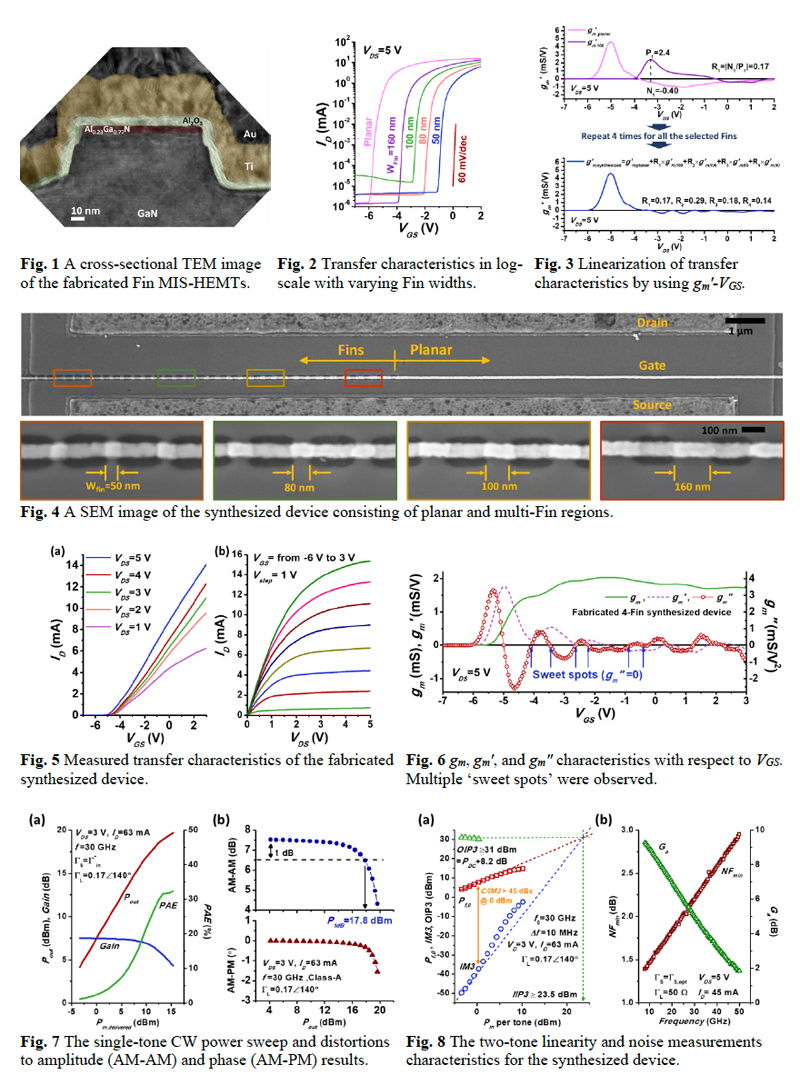25 Linearity by Synthesis: An Intrinsically Linear AlGaN/GaN-on-Si Transistor with OIP3/(F-1)PDC of 10.1 at 30 GHz
Linearity by Synthesis: An Intrinsically Linear AlGaN/GaN-on-Si Transistor with OIP3/(F-1)PDC of 10.1 at 30 GHz
-
 1. Linearity by Synthesis: An Int…
0
00:00/00:00
1. Linearity by Synthesis: An Int…
0
00:00/00:00 -
 2. Contents
40.306973640306978
00:00/00:00
2. Contents
40.306973640306978
00:00/00:00 -
 3. Needs and Significance: Amplif…
76.876876876876878
00:00/00:00
3. Needs and Significance: Amplif…
76.876876876876878
00:00/00:00 -
 4. FET Transconductance (gm)
217.41741741741743
00:00/00:00
4. FET Transconductance (gm)
217.41741741741743
00:00/00:00 -
 5. gm Cancellation Approaches for…
316.31631631631632
00:00/00:00
5. gm Cancellation Approaches for…
316.31631631631632
00:00/00:00 -
 6. An Intrinsically Linear Transi…
370.4704704704705
00:00/00:00
6. An Intrinsically Linear Transi…
370.4704704704705
00:00/00:00 -
 7. Device Structure and Process F…
427.92792792792795
00:00/00:00
7. Device Structure and Process F…
427.92792792792795
00:00/00:00 -
 8. Individual Fin Device Characte…
480.21354688021358
00:00/00:00
8. Individual Fin Device Characte…
480.21354688021358
00:00/00:00 -
 9. Fabricated Device Results with…
513.14647981314647
00:00/00:00
9. Fabricated Device Results with…
513.14647981314647
00:00/00:00 -
 10. Synthesis of gm: 1) Calculate …
551.317984651318
00:00/00:00
10. Synthesis of gm: 1) Calculate …
551.317984651318
00:00/00:00 -
 11. Synthesis of gm: 2) Determine …
611.07774441107779
00:00/00:00
11. Synthesis of gm: 2) Determine …
611.07774441107779
00:00/00:00 -
 12. Fabricated Synthesized Device …
633.26659993326666
00:00/00:00
12. Fabricated Synthesized Device …
633.26659993326666
00:00/00:00 -
 13. Fabricated Synthesized Device …
661.76176176176182
00:00/00:00
13. Fabricated Synthesized Device …
661.76176176176182
00:00/00:00 -
 14. Comparison with Conventional D…
674.84150817484158
00:00/00:00
14. Comparison with Conventional D…
674.84150817484158
00:00/00:00 -
 15. Comparison with Other Works
711.01101101101108
00:00/00:00
15. Comparison with Other Works
711.01101101101108
00:00/00:00 -
 16. Multi-Finger Synthesized Devic…
723.923923923924
00:00/00:00
16. Multi-Finger Synthesized Devic…
723.923923923924
00:00/00:00 -
 17. 1-Tone Power Sweep, AM-AM and …
780.980980980981
00:00/00:00
17. 1-Tone Power Sweep, AM-AM and …
780.980980980981
00:00/00:00 -
 18. 2-Tone Linearity and Noise Cha…
857.82449115782447
00:00/00:00
18. 2-Tone Linearity and Noise Cha…
857.82449115782447
00:00/00:00 -
 19. Performance Comparison with Va…
919.18585251918591
00:00/00:00
19. Performance Comparison with Va…
919.18585251918591
00:00/00:00 -
 20. Conclusions
962.36236236236243
00:00/00:00
20. Conclusions
962.36236236236243
00:00/00:00 -
 21. Acknowledgements
991.12445779112454
00:00/00:00
21. Acknowledgements
991.12445779112454
00:00/00:00 -
 22. Thank you
1014.0473807140474
00:00/00:00
22. Thank you
1014.0473807140474
00:00/00:00




































